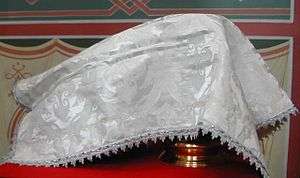
Abdur Rashid Kardar
Abdur Rashid Kardar (1904–1989), often abbreviated as A.R. Kardar, was an actor and film director/film producer. He is credited as establishing the film industry in the Bhati Gate locality of Lahore, British India (now in Pakistan).
Early career
Kardar started as an arts scholar and a calligraphist making posters for foreign film productions and writing for newspapers of the early 1920s. His work would often lead him to meet filmmakers around India.
In 1924, the first silent film, The Daughters of Today was released in Lahore at a time when the city only had nine operational cinema houses. Most of the films shown in theatres in Lahore were either made in Bombay or Calcuta, besides ones made in Hollywood or London. The Daughters of Today was the brain-child of G.K. Mehta, a former officer with the North-Western Railway, who had imported a camera into the country for this very project from London. He asked Kardar to assist him as an assistant director on the project and ended up giving Kardar his début role in his film as an actor.Muhammad Ismail, his friend and fellow calligraphist, accompanied Kardar in the making of the film.

Aër
The Aër (Greek: Ἀήρ, lit. the "air"; modern Greek: Αέρας; Slavonic: Воздýхъ, Vozdúkh) is the largest and outermost of the veils covering the Chalice and Diskos (paten) in the Eastern Orthodox Church and the Eastern Catholic Churches which follow the Byzantine Rite. It is rectangular in shape and corresponds to the veil used to cover the chalice and paten in the Latin Rite, but is larger. It is often made of the same material and color as the vestments of the officiating priest, and often has a fringe going all the way around its edge. Tassels may also be sewn at each of the corners.
It takes its name either from the lightness of the material of which it is made, or from the fact that during the Nicene Creed in the Divine Liturgy, the priest holds it high in the air and waves it slowly over the Chalice and Diskos. Its original use was to cover the Chalice and prevent anything from falling into it before the consecration. It symbolizes the swaddling clothes with which Christ was wrapped at his Nativity, and also the grave clothes in which he was wrapped at his burial (both themes are found in the text of the Liturgy of Preparation).

Ağrı
Ağrı, formerly known as Karaköse (Kurdish: Qerekose) from the early Turkish republican period until 1946, and before that as Karakilisa (also rendered as Karakilise) (Ottoman: قرهکلیسا), is the capital of Ağrı Province at the eastern end of Turkey, near the border with Iran.
History
In the Ottoman Empire era the area was called Şorbulak. The current town centre was founded around 1860 by a group of Armenian merchants from Bitlis with the name Karakilise ("the black church") that became known to the local population as Karakise and this version was turned officially to Karaköse at the beginning of the Republican era. This name was changed to Ağrı by 1946.
In the medieval period, the district's administrative centre was located at Alashkert, once an important town. The "kara kilise" that gave the town its name was a medieval Armenian church. In 1895 Lynch stayed in Karakilise and wrote that it had between 1500-2000 inhabitants, was nearly two-thirds Armenian, and that a barracks for a locally-recruited Kurdish Hamidiyeh regiment had been recently located in the town.
Çağrı
Çağrı is a unisex Turkish given name. In Turkish, "Çağrı" means "The Call", "Appellation", and/or "Distinction". It also means "Falcon". Notable people with the name include:
Given name
Surname
Podcasts:

